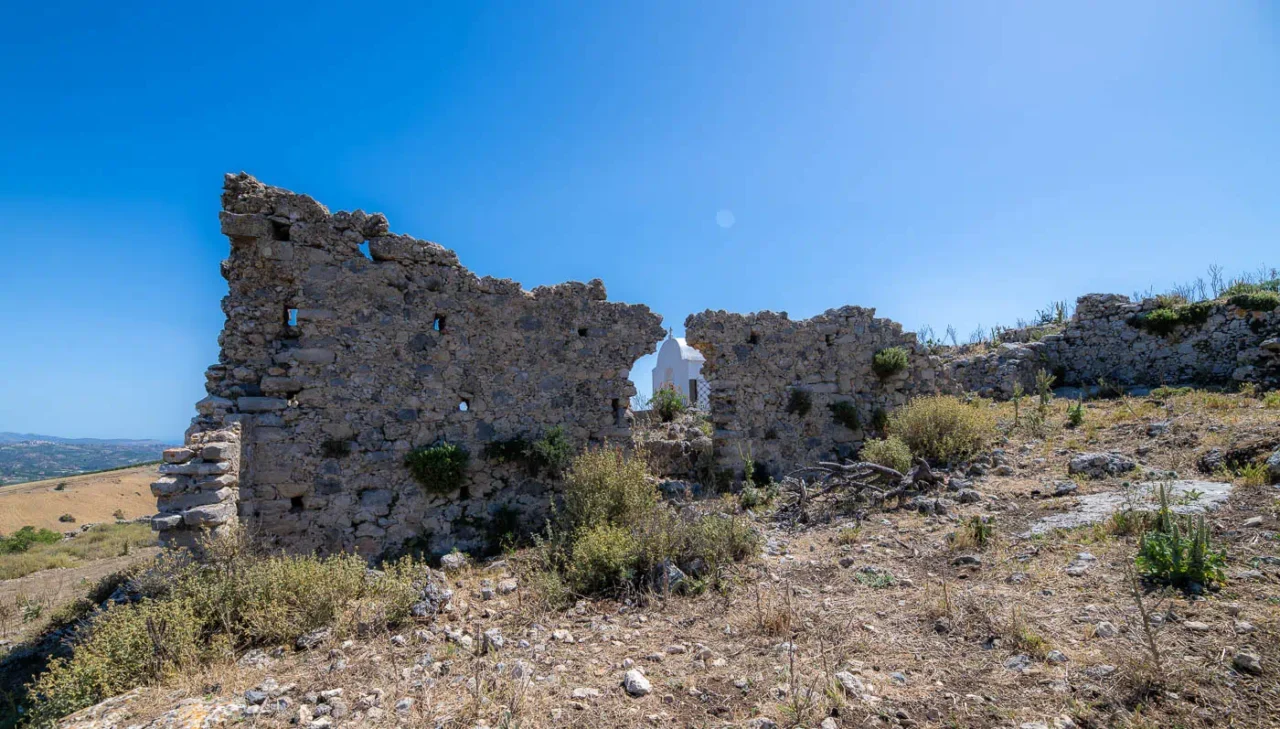
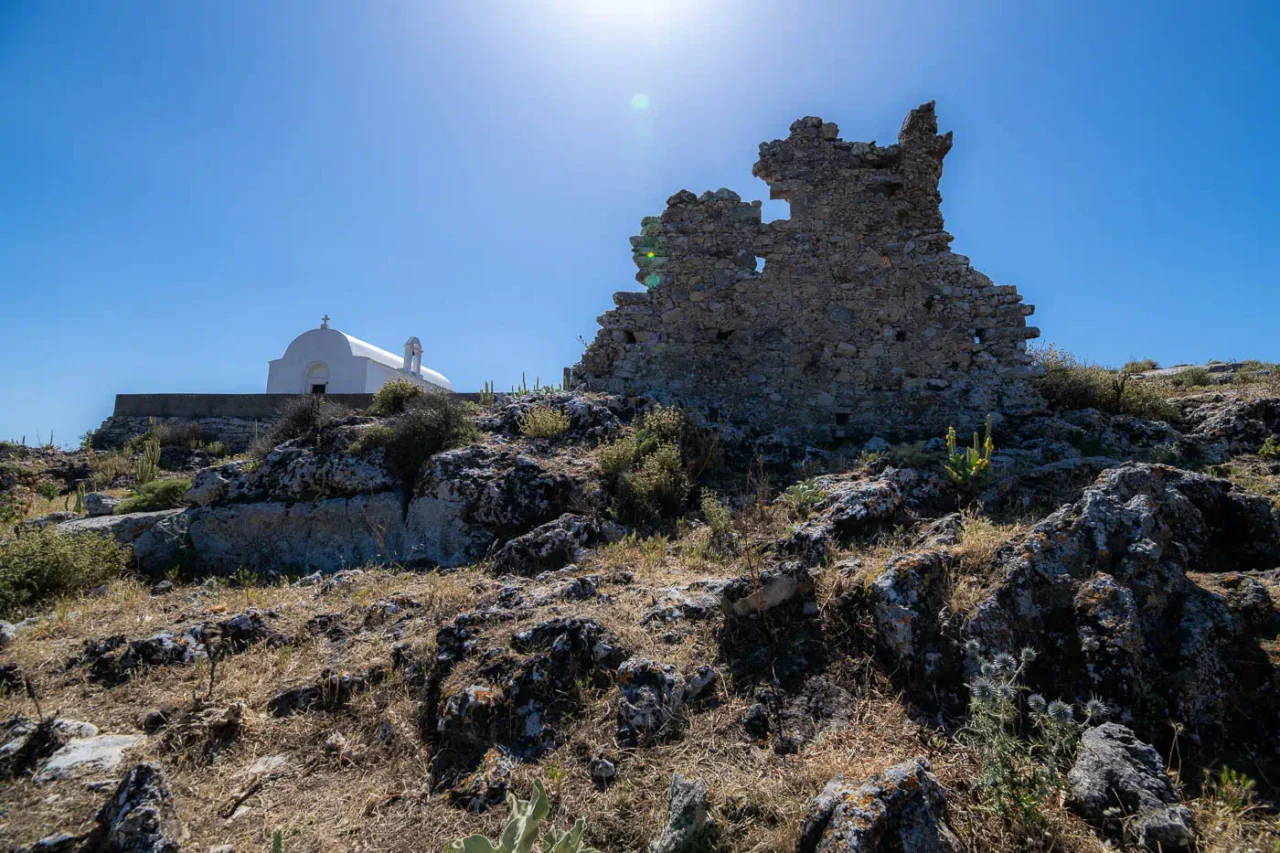
The fortress of Melissa is located near the village of Agios Thomas in Heraklion, Crete. It stands on a hilltop offering a panoramic view of the valleys of Prophet Elias and Venerato. The strategic location of the fortress allowed for control over Malevizi, Temenos, and the northern coast of Heraklion. The road connecting Chandakas (modern-day Heraklion) to Messara passed through this area, making the fortress a crucial point during the Middle Ages. It also played a role in overseeing agricultural activities in the region, similar to the castles of Meleses and Katalagari.
There is limited information available about the castle’s specific history. In Venetian archives, the site is simply referred to as a settlement. The earliest mention of the Melisa settlement appears in a document from the Ducal Archive of Chandakas in 1360: “Casale Melissa.” It is also mentioned as “Melissa” by both Kastrofylakas (with 69 inhabitants in 1583) and the cartographer Basilicata in 1630. In the Turkish census of 1671, it is noted as “Melissa” with 8 charatsia (tax units). The fact that it is not referred to as a castle in the meticulous Venetian records suggests that the fortification was already ruined and abandoned by their time.
The ruins of the walls do not exhibit Venetian characteristics. The most likely scenario is that the fortification was created during the Komnenian period in the 11th century at a location where an older and smaller Byzantine fort or watchtower previously existed. It must have been part of the network of Byzantine castles developed during the Second Byzantine period and was not utilized by the Venetians.
The eastern side of the fortress is naturally fortified by a cliff, while access from the west is relatively easy via a dirt road. The main building within the fortress is a small tower-like structure at the center of the enclosure. The fortifications cover a roughly rectangular area enclosed by a perimeter wall 0.7 meters thick, which is more complete on the western and southern sides where the terrain is gentler. The entire fortress area is arranged in levels with slight elevation differences between them.
The central building complex has walls 0.90 meters thick and unusual dimensions. The southern wall of the central complex stands over 8 meters high, resembling a tall rectangular tower. At the northwest corner of the fort, the base of a square tower extends inward from the wall. On the northern side, the wall bends at a 45-degree angle towards the south, giving the entire fortified enclosure a pentagonal shape. Inside the fortress, there are large rectangular buildings adjacent to the eastern wall, whose purpose remains unknown.
Next to the central building is the whitewashed chapel of Zoodochos Pigi, visible from a distance due to its prominent location. It is believed that a small monastery dedicated to the Virgin Mary, known as Kera Melissani, may have existed at the site of the current church. A similar fortress with an enclosure, a small tower, wine presses, and a church dedicated to Zoodochos Pigi can also be found in the village of Katalagari.
Construction Period:
- 11th or 12th century during the Second Byzantine Period
Location:
- Near the village of Agios Thomas in Heraklion, Crete
- Strategically positioned overlooking Malevizi, Temenos, and the northern coast of Heraklion
Dimensions:
- The fortress covers a roughly rectangular area.
- The perimeter wall is 0.7 meters thick.
- The central building complex has walls 0.90 meters thick.
- The southern wall of the central complex stands over 8 meters high.
Historical Significance:
- Part of the Byzantine castle network during the Second Byzantine period.
- Not utilized by the Venetians and fell into ruin.
- The area west of the fortress housed the small settlement of Melissa, abandoned around the 17th century.
Current Status:
- The fortress is currently in ruins.
- The chapel of Zoodochos Pigi remains well-preserved.
References
Fortifications and Castles of Crete from Antiquity to the Ottoman Era, Μανιατόπουλος, https://greekworldhistory.blogspot.com/













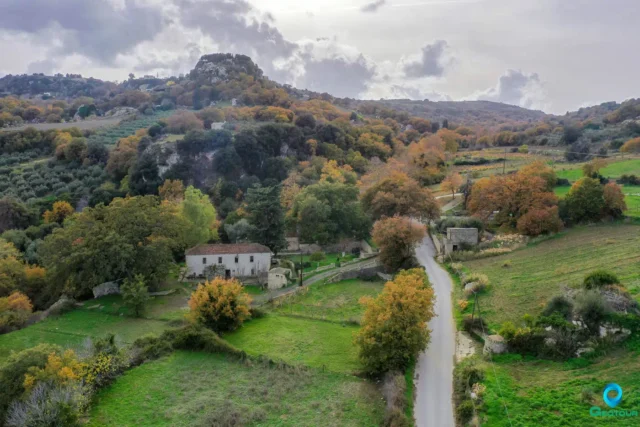

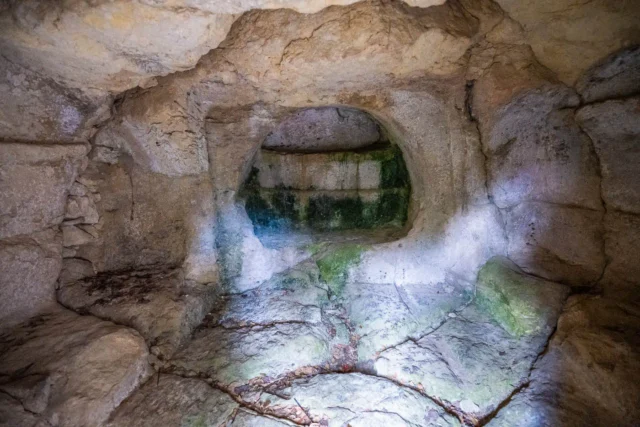

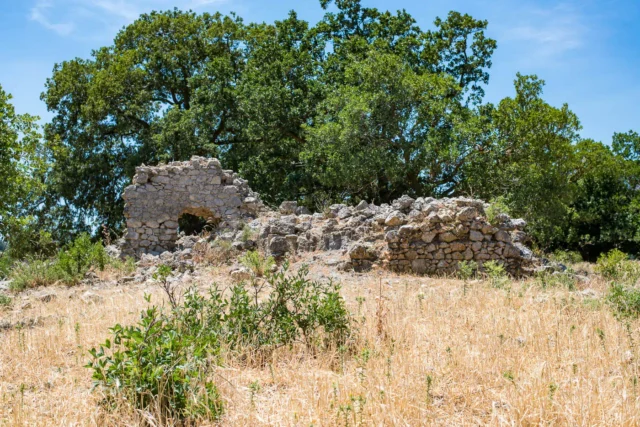



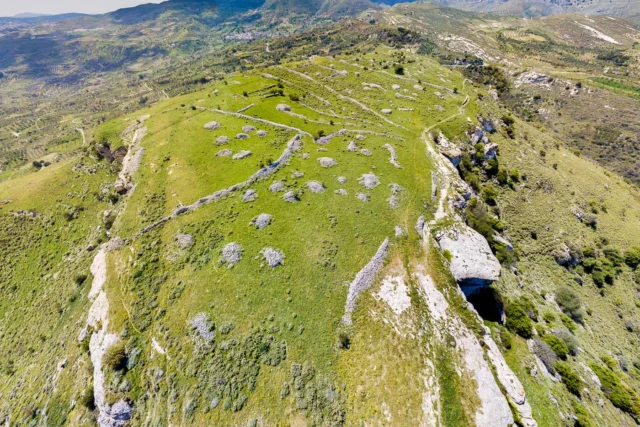

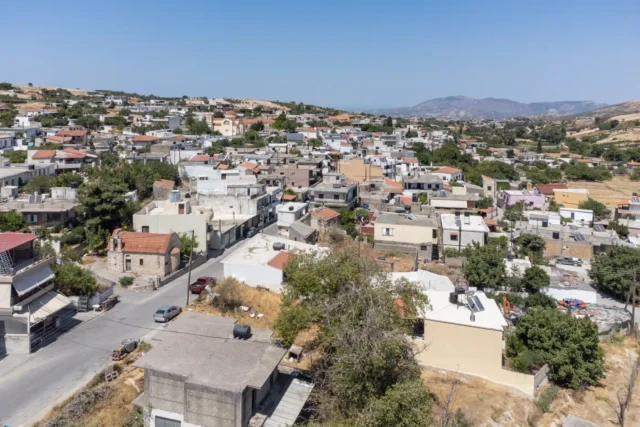
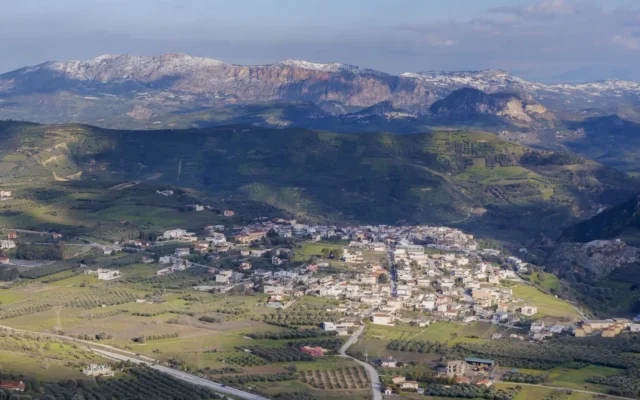
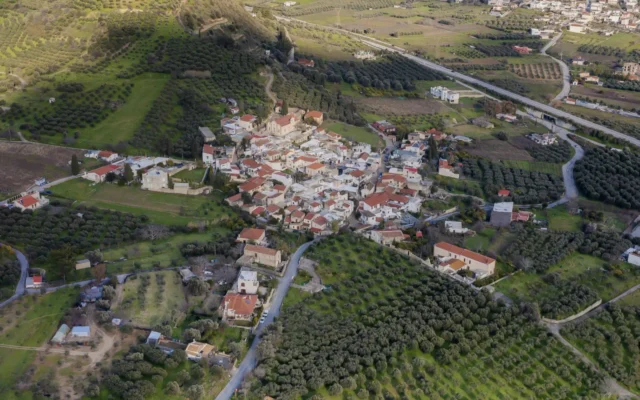


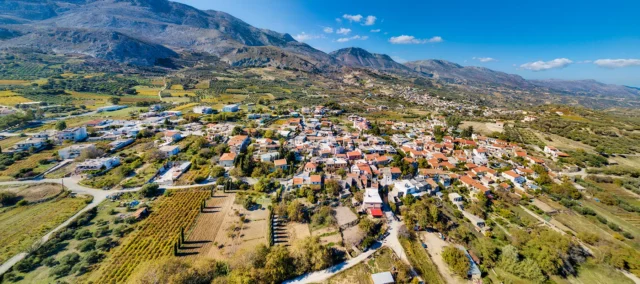
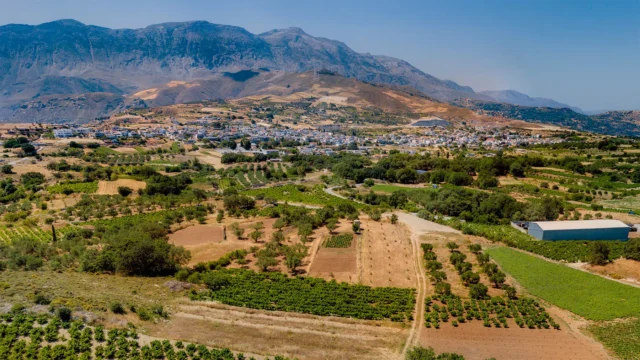


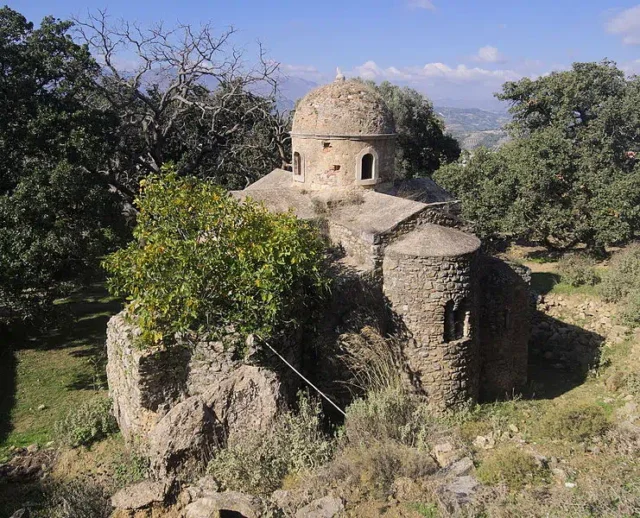
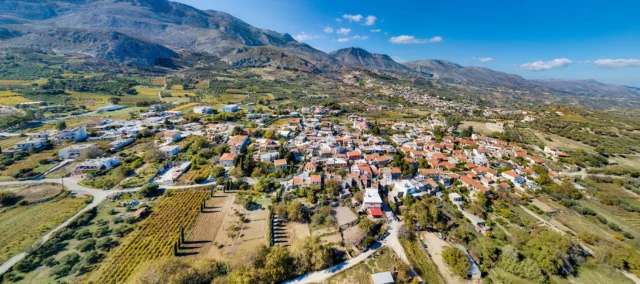

There are no comments yet.